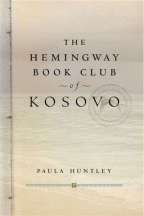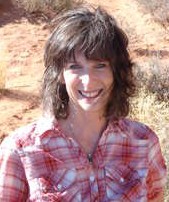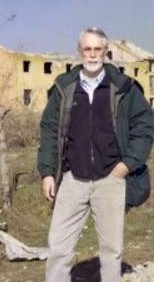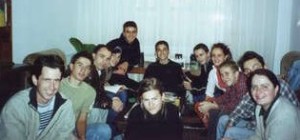February 21, 2012
If you read the Valentine’s Day posting on the legend of Rozafa, you no doubt found inspiring the purity of Rozafa’s self-sacrificial love for her child and her country, yet you also noticed the ambiguity surrounding the brothers’ decisions and actions. On the one hand, to their credit, the two elder brothers break their pledges to keep secret the imminent human sacrifice in order to protect their wives, and the youngest brother, seemingly a man of honor, keeps his “besa,” his pledge to say nothing about the immurement to Rozafa. On the other hand, the elder brother hangs his head in shame when he tells Rozafa that the wall demands a human life, for Rozafa has been chosen not by “chance,” as he claims, but rather by the elder brothers’ manipulative hypocrisy. Further, if the sacrifice must be determined by chance, then the three brothers might have drawn lots so that one of them, not one of their wives, would die. The men, in other words, find motives for their actions in self-preservation and fear. Only the woman, Rozafa, overcomes her ‘trembling’ and gives her life for her child and for Albania.
Albania’s great novelist Ismail Kadare draws on the legend of Rozafa in his 1976 novel The Three-Arched Bridge (Ura Me Tri Harqe), another story of immurement that roots the theme of sacrifice in the ambiguity of motives. Kadare has set his story in the late fourteenth century, just one generation before the Albanian hero Skanderbeg leads the resistance to the Ottoman invasion of 1444, a resistance that ends in 1479 at the Siege of Shkodra, where the triumphant Turks littered the Citadel of Rozafa with 60,000 Albanian corpses to be shredded by vultures. With the monk Gjon narrating Kadare’s novel, we learn that Albania stands in need of another building project, this time a bridge, to link Albania to the rest of the Balkans at a time when Ottomans have already infiltrated the culture, a precursor to invasion. Though this bridge, just like Rozafa’s castle, goes up quickly, after each night the piers and arches show signs of damage no hammer or claw could inflict, generating wide-spread gossip in favor of another “sacrifice for the sake of the thousands and thousands of travelers” who will cross the bridge “down the centuries to come” (105).
Well informed about Rozafa’s patriotic act, Gjon immediately notices that this call for sacrifice has more to do with commerce than with defense, so he wonders who might be willing to die for a significantly lesser cause. But someone does volunteer to be walled in the bridge, Murrash Zenebisha, an “ordinary” man, a mason, just like Rozafa’s husband (114). Yet instead of responding with adulation for Murrash when Gjon hears rumors of his heroism, Gjon reacts with confusion over the mason’s lack of a clear motive for martyrdom, then with horror when he sees Murrash “planted in the stone,” his face “splattered” with a “mask” of plaster, his “arms and legs…merged with the wall (115), his “oblivious white eyes” staring out at the monk (117). Gjon’s terror grows, too, when he notices Murrash’s “wounds…between the neck and collar bone” (122), and when Murrash’s family members, seemingly “petrified” with grief initially, soon bring suit against one another after quarreling over “compensation” for their kinsman’s death (131, 177). Has Murrash been murdered, caught sabotaging a bridge he believed would benefit only foreigners and a corrupt local Count? Has Murrash’s family sold him out for profit?
With Murrash supporting the bridge, Gjon concedes that it quickly becomes a splendid “rainbow” structure. But this supposed guarantor of a prosperous future, Gjon knows, has “death at its foundations” (157, 151), a martyrdom tainted by lies. Eventually, Kadare’s narrator acknowledges his own complicity, confessing his presence as the Count and the bridge-builders planned the murder of Murrash (184, 122). Yet Gjon persists courageously with his chronicle to the end, even as the Turkish horsemen clash with Albanian patriots on the bridge (179), thus mitigating his role in the death of the mason. But fear for his country blends with his courage, and that fear roots in self-knowledge, as Gjon imagines his ethnic identity plastered and dead in the bridge, a bridge built—as was Rozafa’s castle—with sacrificial blood and soul-withering lies.
The significance of Kadare’s novel rests not only in the morality tale—break not thy besa—but also in Kadare’s Faulkner-like capacity to paint so vividly the truths of the human heart, a heart sometimes strong enough to die for others but often weak enough to succumb to fears and lies. If these same kinds of hearts beat in Asia and the West as well as in Albania, the Balkans, and Eastern Europe, then we may read Kadare’s work as a prophecy for us all. As we behold Rozafa’s milk streaming down the fortress walls, then Murrash’s eyes peering from the bridge, we witness at once our past and our future, our collective magnificence and our self-inflicted doom.
For a full discussion of Kadare’s novel in the context of the legend of Rozafa, see my article “Albania Immured: Rozafa, Kadare, and the Sacrifice of Truth,” published in the South Atlantic Review, volume 1, number 4, fall 2006, pages 62-77. The ideas above and much of the language come directly from the article.
















